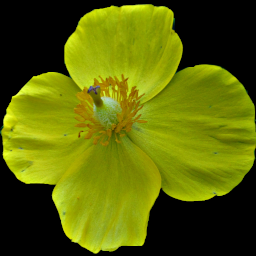
Also called “Devil’s Paintbrush,” on the principle that attributes anything striking or bright in nature to satanic forces. Gray gives us another name, Grim the Collier, that refers to a traditional character who gets the best of the devil in folk tales, putting our subject on the side of good rather than evil.
There is no mistaking this plant for anything else. There are many flowers that look like small dandelions, but only one is bright orange—a rare color among flowers, otherwise represented here mostly by Daylilies and Orange Touch-Me-Nots.
This would be an ordinary dandelion-like weed, except that the flowers are bright orange, making it one of our showiest wild flowers. It is fairly rare in the city of Pittsburgh itself, but begins to be seen in the northern fringes of our area, and becomes quite common farther north in Pennsylvania. This plant was one of a thriving colony in St. Peter’s Cemetery in the Arlington neighborhood of Pittsburgh, where it was blooming in late August.
This species is often placed in the genus Pilosella, but there seems to be much uncertainty. The imperfectly omniscient Wikipedia leads us on a merry chase: Hieracium aurantiacum redirects to Pilosella aurantiaca, but Pilosella redirects to Hieracium. [This has been true for several years now, and we were tempted to correct it, except that we still find it amusing.]
Gray describes the genus and the species:
HIERACIUM [Tourn.] L. HAWKWEED
Heads 12-many-flowered. Involucre more or less imbricated. Achenes short, oblong or columnar, striate, not beaked; pappus a single row of tawny and fragile capillary rough bristles. —Hispid or hirsute and often glandular perennials, with entire or toothed leaves, and single or panicled heads of mostly yellow flowers; summer and early autumn. (Name from hierax, a hawk.)
Flowers orange-red.
H. aurantiacum L. (ORANGE H., DEVIL’S PAINT-BRUSH, GRIM THE COLLIER.) Long-hirsute; leaves oblanceolate, 6-15 cm. long, green on both sides; a stolons numerous, slender; scape 2-6 dm. high, usually 1-2-bracted; heads about 2 cm. broad. Fields, etc., e. Que. to Ont. and Pa., locally too abundant. June, July [but seen in late August and early September in Pittsburgh]. (Nat. from Eu.)









